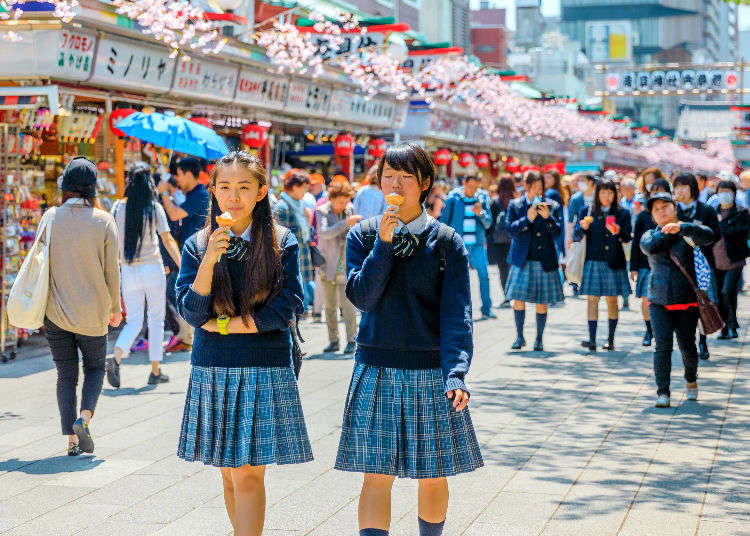
Meals, Manners & More: Your Ultimate Guide to Eating in Japan!
- Written by: Lucio Maurizi
Japan has some very particular cultural rules when it comes to eating, drinking, and dining in public places. While most of them are not by any means laws, they are widely followed nonetheless.
For someone visiting the country, especially for the first time, it may be hard to grasp the nuance of differences in manners and etiquette right away! Sometimes these can be very different from one’s country of origin, and for this reason, the mindful traveler will want to know about these rules beforehand.
- Table of Contents
-
- You asked, we answered!
- 1. Is it ok to eat while walking in Japan?
- 2. Can we really drink beer on trains in Tokyo?
- 3. Are there non-fish meals in Japan?
- 4. How are foreign food restaurants in Japan?
- 5. Are there non-smoking restaurants in Tokyo?
- 6. Is it expensive to dine out in Tokyo?
- 7. Is grocery expensive in Tokyo?
- 8. What are some of the most common Japanese dishes?
- 9. Will I have to eat rice at every meal?
- 10. How is the portion size in Japan?
- 11. Do Japanese really have no spicy foods?
- 12. Do Japanese people always drink when dining out?
- 13. Can I use a fork instead of chopsticks?
- 14. What should I know about dining with Japanese people?
- 15. Do Japanese people really slurp noodles?
- 16. Will I have to sit on my knees at every meal?
- 17. How often do I have to take my shoes off at restaurants?
- 18. I’ve seen some people wiping their face with an oshibori hand towel. Is that OK?
- 19. Is it true that Japanese people split the bill equally?
- 20. Is it important where people seat at the table?
- You’re all set!
You asked, we answered!
People often look for answers about how to behave in Japan, so we have compiled a list of the most commonly asked questions on social media and shed some light over them.
Here, you’ll find a number of useful and valuable tips to help you conform more easily in Japan when it comes to food, allowing you to blend in seamlessly, and to understand the culture of this beautiful country more deeply!
1. Is it ok to eat while walking in Japan?

This is probably a big thing that trips up visitors. In most countries it’s not frowned upon to eat while walking. Why not enjoy a sandwich while heading to the next sightseeing spots?
In Japan there is no explicit law that forbids you from eating in the street – and indeed no one will stop or scold you – but generally it’s better to avoid walking while eating. (Worst case scenario, you’ll get a stink eye or two, but it’s important to know that it’s generally frowned upon.) This code of conduct probably springs from the mindset of “ikkai ichi dousa,” a phrase with similar meaning to "doing one thing at a time."
Most people who buy food on the go, for example at a convenience store, will eat at the store itself, or in front of it. You could also find a bench, or sit in a park and finish your meal there, before continuing your walk. You’ll also soon notice that finding a garbage can in Japan is nearly impossible, yet the streets are generally very clean - be prepared to have a small trash bag with you.
Finally, a notable exception to the rule is when it comes to festivals, where people will happily eat on the street. You'll notice however that many Japanese will still favor standing off to the side somewhere while eating instead of walking while eating however.
2. Can we really drink beer on trains in Tokyo?
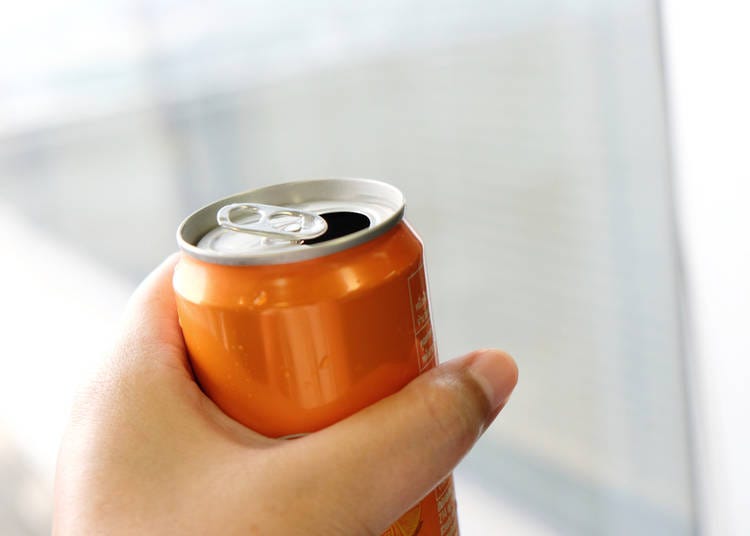
The answer is, once again, yes, but it is generally best not to. As part of the same form of ideal respect for one’s surroundings and bystanders, people in Japan will usually avoid doing things that they may be allowed to do.
There is a word in Japanese, "omoiyari," which encompasses the idea of trying to be as little a bother as possible to people around you. Drinking alcohol virtually anywhere (with the exception of sacred grounds) is generally allowed in Japan, so long as you aren't a public nuisance, but when it comes to trains it’s better to refrain from doing it, to avoid looking disrespectful. Drinking while waiting for the train is more acceptable, but don’t do it within the cars.
Outside of the basic idea of respect, this also serves a more practical purpose. In the often crowded trains of Japan, should you spill your drink, you could really cause trouble to other passengers. That’s why, by the same token, it’s best to avoid drinks in the train all together (although you may get away with a drink that seals with a twist-cap).
A notable exception to this rule is the Japanese shinkansen bullet train or other trains where you reserve a seat and pay a premium - in which case alcohol and other beverages are often sold right on the train itself. Feel free to enjoy your drinks, alcoholic or otherwise, while traveling on these kinds of trains.
3. Are there non-fish meals in Japan?
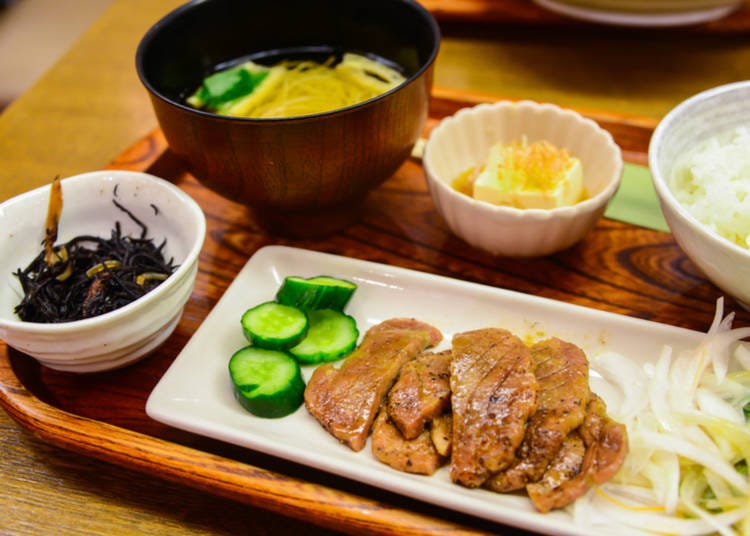
Yes, plenty! Japan is famous (rightfully so) for its fish dishes, but you’d be mistaken if you thought that’s all (or most of what) they eat.
From noodles (like soba, ramen, yakisoba), to meat (steak, tonkatsu and more), to vegetables and fruit, prepared in a variety of ways, you’ll find in Japan a plethora of dishes guaranteed to satisfy you, no matter your preferences.
4. How are foreign food restaurants in Japan?
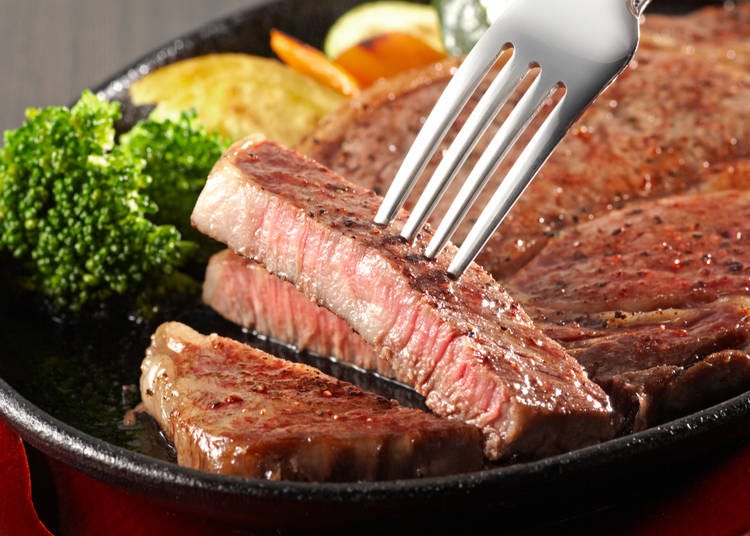
To answer this it’s important to remember that foreign food in any country is usually adapted to the taste of locals. You will certainly be able to find restaurants in Japan that serve authentic ethnic food from other countries, but, more often than not, you’ll find that the dishes that you know and love may be different.
This is not to say that they are not good. In fact they may positively surprise you. Usually restaurants serve very authentic dishes, but re-invent others - sometimes coming up with fusion dishes like "Spaghetti Napolitan."
With few exceptions, you’ll find that foreign food in Japan is prepared and served not necessarily how it is in its country of origin, but instead as those managing the restaurant imagine the dish to be like.
5. Are there non-smoking restaurants in Tokyo?
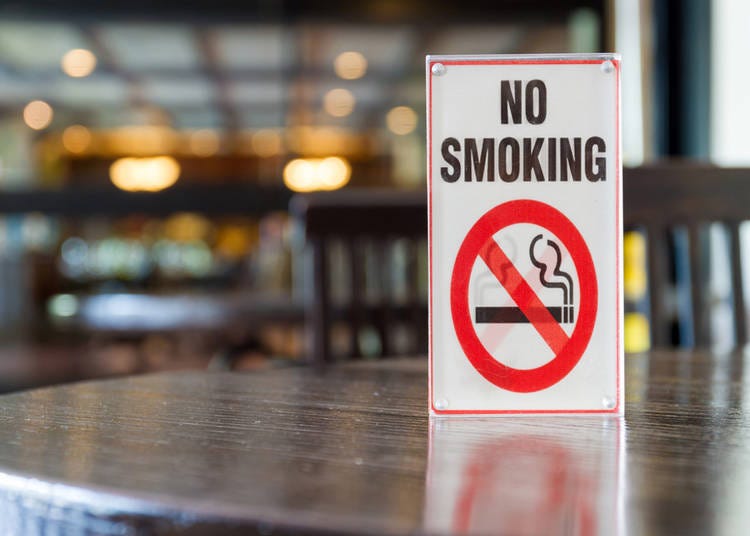
Yes, even in 2018, there are.
This question makes a lot of sense because, while it’s not allowed to smoke on the street outdoors in Tokyo (except for in designated smoking areas), many establishments do allow smoking - which comes as a surprise to many people from the West. For this reason you’ll find that many restaurants have no restrictions when it comes to smoking, or have smoking areas.
Yet more and more dining places have banned smoking all together, and most of the newer businesses also have a no-smoking policy. The restrictions on smoking in public places are likely to increase as the 2020 Olympics approach, but these changes have started more than just a few years ago.
If you’re a non-smoker, you’re very likely to find a restaurant where you can enjoy your meal without having to worry about other people’s bad habits.
6. Is it expensive to dine out in Tokyo?
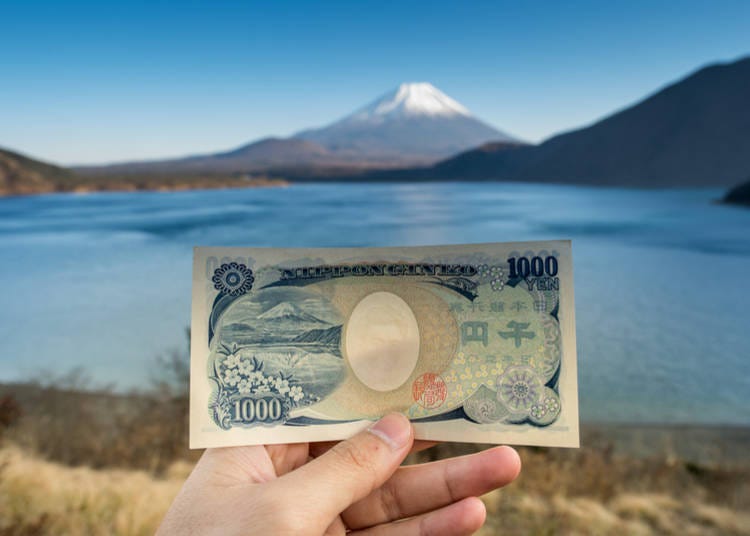
Dining out in Tokyo, especially in the most famous areas or restaurants can be expensive, but the idea of Tokyo being an impossibly expensive city when it comes to food, is a common misconception.
Like anywhere else, there are expensive places, and cheap ones. Tokyo can offer some serious extremes on the whole spectrum. The good news is that not only are there many very cheap and tasty dishes you can try in Tokyo (ramen, udon, onigiri, bento boxes, katsudon, gyudon, just to name a few), but also keep in mind that Tokyo is a massive metropolis. Sometimes, all you need to do to avoid the tourist traps prices, is go to different areas that usually cater only to locals. You’ll find amazing food for every wallet.
If you’re really on a tight budget, convenience store food, ramen (and noodles in general) shops shops, 100 yen sushi restaurants, and other similar options will allow you to have 3 good meals a day for very little money.
7. Is grocery expensive in Tokyo?
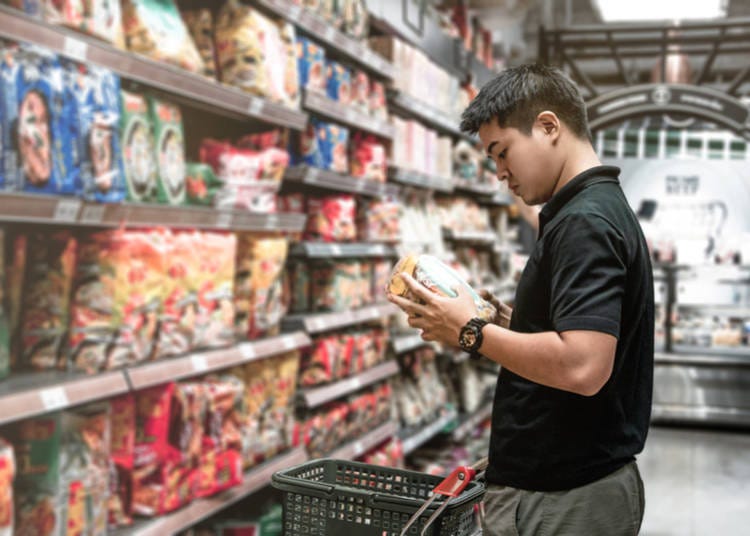
For most people coming from other countries, yes, grocery is somewhat expensive - at least in Tokyo. While the quality of the food is very high, the prices can be surprising. On average, meat, pasta, and fish are more expensive than they are in other countries. For example, beef, for regular cuts and quality, runs to 198 yen/100gr, but it can be commonly found for up to 600 yen/100gr (and for especially good quality even much more).
Fruit is the item that shocks most people. In fact fruit in Japan is not only considered a consumption item, but it has the added value of being considered a valuable present to give on several occasions. If you’re planning on stocking up on fruit, expect apples to be about 200 yen/ea.
Watermelons can cost up to 3000yen each. Avocados, 250 yen each. Similarly, vegetables can be quite expensive as well, especially during seasons in which natural phenomena like typhoons or floods reduce the availability dramatically, inflating prices.
8. What are some of the most common Japanese dishes?
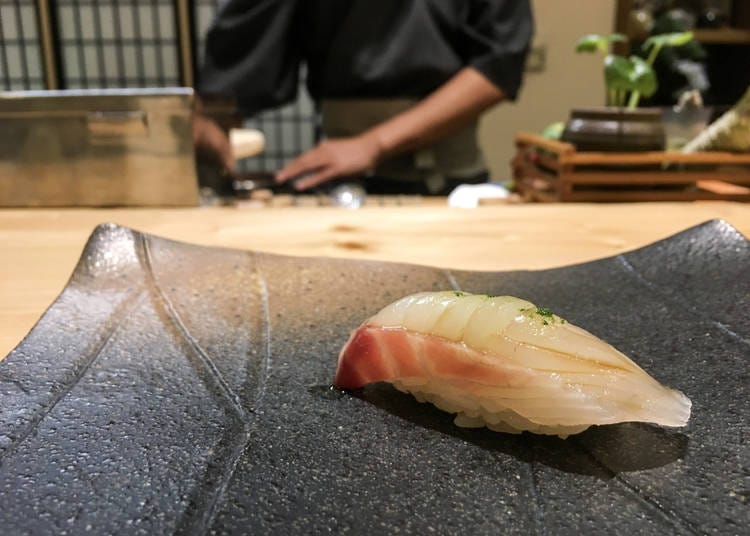
Unlike what many people outside Japan might think, sushi and sashimi, albeit famous and popular, are not among the most common dishes in Japan (among Japanese people).
Wildly more common are noodle dishes, rice, and some meat dishes like tonkatsu, or meat prepared with vegetables, however Japanese have a very varied diet. Just check the link below to see what kinds of food trends have been seen in the country!
9. Will I have to eat rice at every meal?
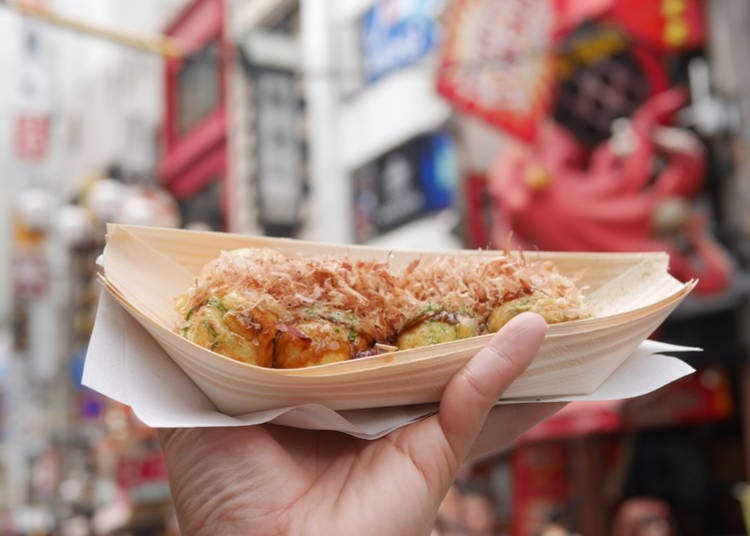
Rice is very important in Japanese culinary culture and is indeed served almost at every meal and almost with every dish. Rice serves the same purpose as bread does in other countries, making it a staple food, and a beloved side dish. That being said, you won’t have to necessarily eat rice if you prefer not to. A number of Japanese dishes are prepared without rice accompanying them.
10. How is the portion size in Japan?
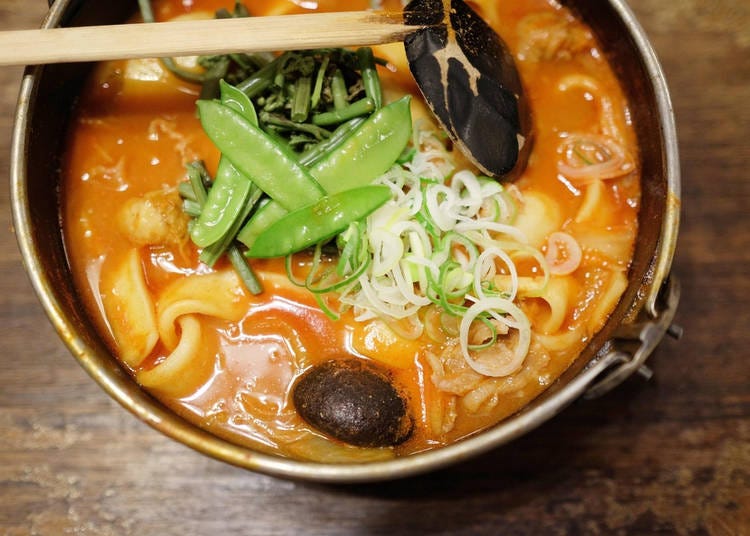
Often times, people picture the portions in Japan as exceptionally small. In some cases that may be true (i.e. sushi – a portion can be composed of 1 or 2 pieces), but generally the portions are relatively generous. Surely, when compared to countries such as the United States, or Italy, some restaurants’ portions may appear small, but objectively they are usually large and filling enough.
11. Do Japanese really have no spicy foods?
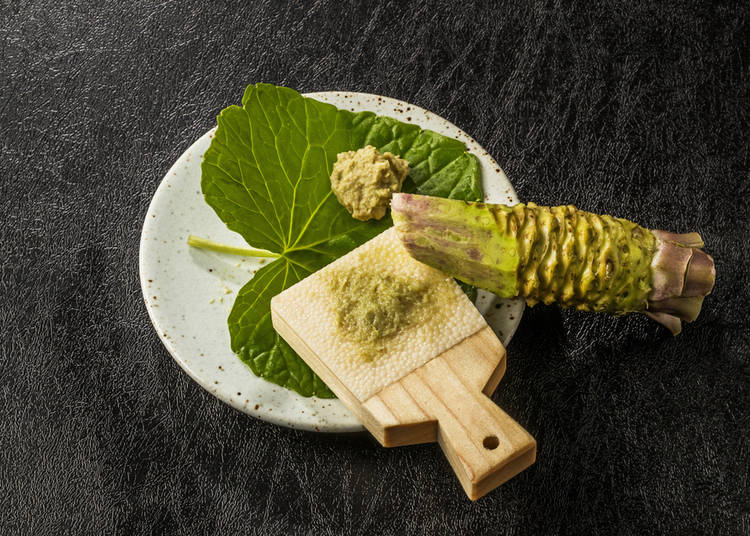
Spicy food in Japan is rare, and even when the food is marked as “spicy” it will probably not be as spicy as you’d think.
Most Japanese dishes have no spicy component, so the Japanese palate is often very sensitive to spiciness. Seasoning in general, when it comes to Japanese dishes is rather mild. Some exceptions are those flavored with togarashi, Chinese mustard, mountain pepper, yuzu-koshou, shichimi, chili, and a few other ingredients which add a bit of a kick. Generally, though, you won’t find those burning spicy flavors so typical of some areas of China, Mexico, or southern Italy.
Even the famous and widely used wasabi, which is usually referred to as spicy, while presenting a very strong stinging flavor, can’t be considered spicy, but rather robust.
12. Do Japanese people always drink when dining out?
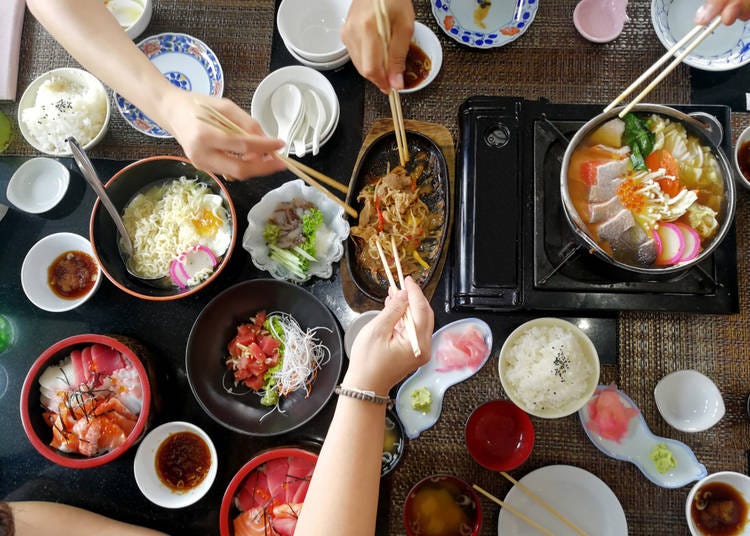
Usually a dinner out with coworkers, friends, boss (even during a business meeting) is accompanied with alcohol (at times large quantities of it). This does not happen much during the day, but it’s very common in the evening and nighttime. Alcohol is very much a social lubricant in Japan, making it an almost must-do thing when it comes to social or business gatherings.
If you don’t drink, don’t despair! No one will think any less of you, of course. Just keep in mind that the other Japanese diners might end up enjoying a drink or eight over dinner at a restaurant.
13. Can I use a fork instead of chopsticks?
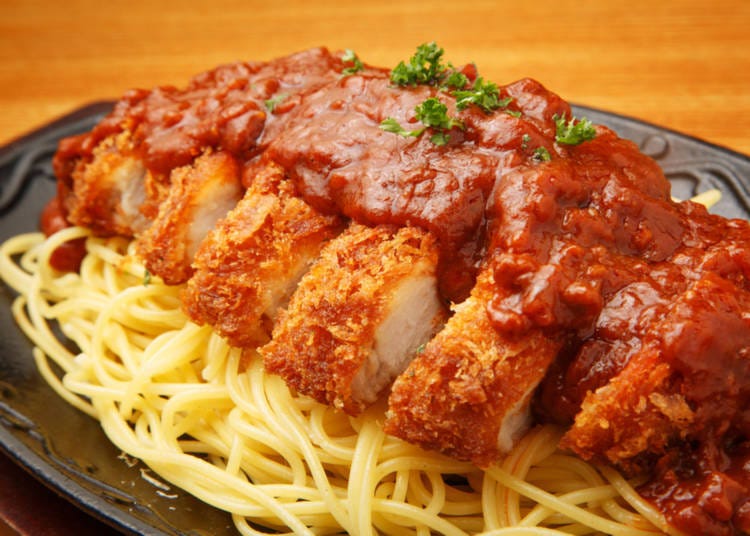
You most certainly can! With some exceptions.
It’s true that in most Japanese-food restaurants in Japan, you will not be presented with a fork, but should you ask, it’s very unlikely that there will be no fork in the kitchen for you.
That being said, it’s actually quite rude to eat certain dishes with fork and knife (i.e. sushi). It won’t take long to master chopsticks, and it might be most practical to practice using them before your trip to Japan, but if you don’t feel comfortable using them, rest assured that most restaurants will be happy to give you different cutlery.
14. What should I know about dining with Japanese people?
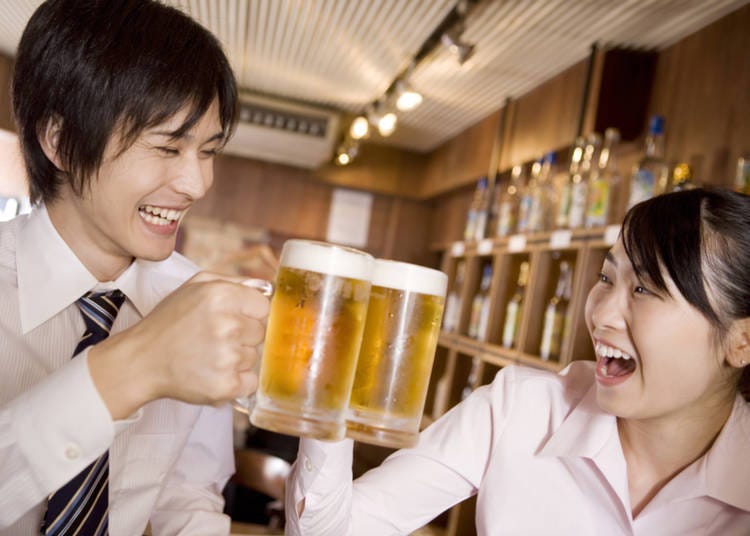
For a comprehensive list of table manners, refer to the link below. This will certainly help!
In general, expect people, especially if you’re a guest, to be very attentive to your needs. If you’re drinking, make sure you don’t empty your cup (unless you’re ready to drink more), because chances are someone will refill it very quickly.
You’ll also notice that people help themselves from a common dish. When in a friendly environment they might eat directly from it. More likely they will put the food in their own dish and only after, eat it. It’s good to do the same. A meal, in Japan, is usually a social event. Expect the meal to be quite long (except for in places like ramen shops, udon shops, and generally the Japanese equivalent of fast food restaurants).
15. Do Japanese people really slurp noodles?
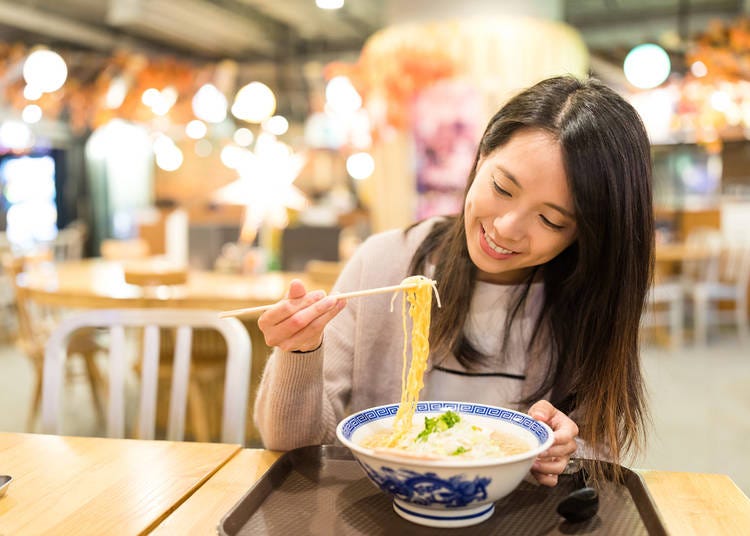
Yes, they do. Sometimes, loudly!
While this can be rude in some other countries, slurping noodles in Japan in common, and, to a certain extent, expected.
Noodles are often very hot and slurping them serves the purpose of cooling them down while eating. Some people will even tell you that slurping noodles makes them taste better. If you go to a noodle restaurant, expect quite a concerto.
16. Will I have to sit on my knees at every meal?
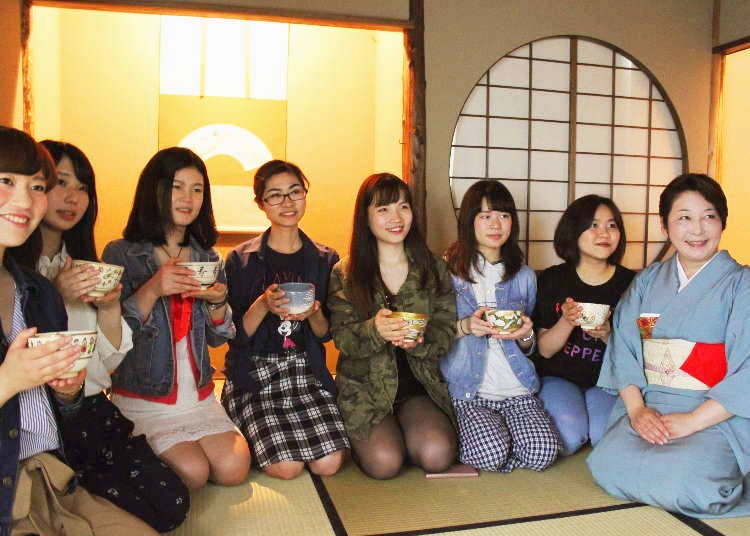
No you won’t!
Japanese traditional dining is around a short table surrounded by pillows on which people kneel or sit. Also ceremonies like the famous tea one employ the so called seiza (lit. proper way of sitting), which requires you to sit on your knees, legs parallel, feet tucked under your rear.
Some restaurants do have this kind of seating arrangement, but most establishments have regular tables and chairs. Occasionally you’ll find places with low tables but with a gap underneath them with plenty of room to seat regularly.
17. How often do I have to take my shoes off at restaurants?
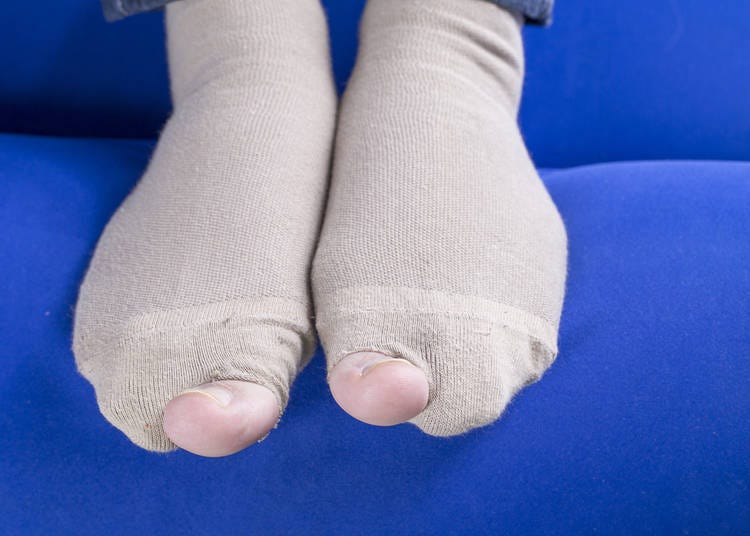
As many know, it’s a given in Japan to take one’s shoes off when entering a private residence, or a shrine. In some restaurants you’ll have to do the same.
It’s not very common to have to take your shoes off, but you can expect perhaps one out of 5 restaurants to be a no-shoes establishment. Oftentimes, some restaurants like yakiniku, shabushabu, or izakaya have sections in which you can only dine with your shoes off, and others in which that is not required. Usually, if you see that a restaurant has tatami flooring, you’ll probably be asked to take your shoes off upon entering.
18. I’ve seen some people wiping their face with an oshibori hand towel. Is that OK?
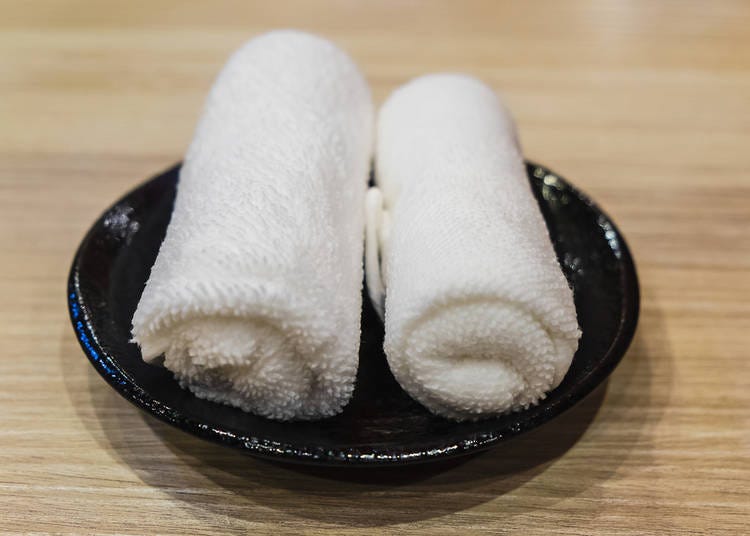
Almost every time you seat at a restaurant in Japan, you’ll be handed by the staff an oshibori. This is a hand towel (cold or warm depending on the season) meant to clean your hands before your meal.
Technically, oshibori are for wiping hands only, and it is inappropriate to use them to freshen your face - though you may see others doing it, bear in mind that it's not considered to be the best manners.
19. Is it true that Japanese people split the bill equally?
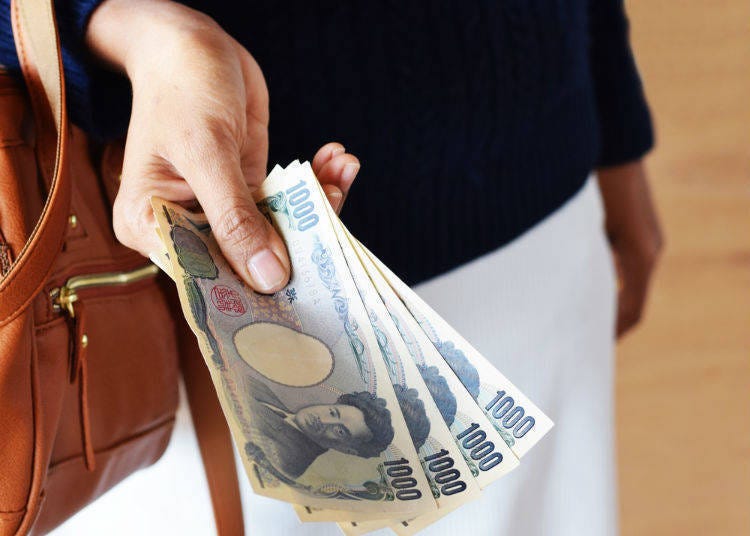
Generally, yes. This also comes from the fact that, when dining, people don’t usually order their own dish, but instead dishes for the table, which everyone enjoys. Especially in cases like restaurants that offer all-you-can-eat and all-you-can-drink menus, each person spends and pays the same amount. In cases of small differences, they are usually not addressed.
That being said, in situations in which the diners have ordered and eaten very different items, people might instead do a quick calculation of what each person owes depending on what they have had (although this happens more commonly among younger people).
In less informal situations, though, like during business dinners, or meals with boss and coworkers, or among small groups of friends, one person will likely pick up the bill (usually the “higher rank” one).
20. Is it important where people seat at the table?
If you’re among friends, it won’t matter, but if you want to go the extra mile to show respect in a formal setting, at a business dinner, or to the elderly, or with your friend’s or partner’s family, it’s good to know a few easy to remember rules.
A table always has a “seat of honor” called kamiza. The seat is usually the one in the corner farthest from the door. Ideally in a position where two walls converge in a corner (in traditional Japanese dining, while sitting on the floor, such seat would be the most comfortable).
The kamiza is the seat of the highest-ranking person at the table, the oldest, or the most important. Conversely, younger people, or lower rank people seat farther from the kamiza and on opposite sides of the table, so to have more room to order, move around to pass food to other diners at the table, or pour drinks.
You’re all set!
Knowing these few things will certainly allow you to be more accustomed to the “Japanese way” and, you’ll see, these differences are not that hard to manage once you know them!
Top image credit: Benny Marty / Shutterstock.com
Lucio Maurizi is an automotive expert specializing in Japan's car scene and auto-tourism. With an MA in East Asian History from La Sapienza Università di Roma, he's a multi-talented contributor to travel platforms like LIVE JAPAN, Japan Travel, and GPlus Media. His Instagram account (50k+ followers) offers insider views on Japan's automotive culture. Lucio also actively collaborates with professional drivers and influencers and organizes can't-miss car events in Tokyo.
- Area
- Category
*Prices and options mentioned are subject to change.
*Unless stated otherwise, all prices include tax.
Popular Tours & Activitiess
Recommended places for you
-

2025 Japan Autumn Color Report: Tokyo's Ginkgo Trees Starting to Glow
by: Timothy Sullivan
-

2025 Autumn Colors Report: Kurobe Gorge Nearing Peak
by: Timothy Sullivan
-

Don't Miss Out! The One Thing You Must Do Before Shopping at Mitsui Shopping Park LaLaport: Get Your Max 10% OFF Coupon Book
-

See Asakusa and Tokyo Skytree® in a New Light at the "Také Akari" Festival (Winter 2025-2026)
by: Guest Contributor
-

Enjoy Japan's Gorgeous Winter Lights! Ride the Romancecar to Shonan no Hoseki Illumination
by: Guest Contributor
-

A Travel Game Changer! Go Hands-Free Between Tokyo and Kyoto with LUGGAGE EXPRESS by JTB and JR Tokai
by: Guest Contributor
Inspiration for Accommodations
-

Enjoy Mt. Fuji from the Comfort of Your Room! Recommended Ryokan with Mt. Fuji View
-

Stay Near the Cherry Blossoms! Hotels for Cherry Blossom Viewing in Tokyo
-

Family-Friendly Hotels with Free Shuttle to Disneyland: Convenient Access for a Magical Stay
-

Top Ranked Hakone Hotels with Mt. Fuji View: Enjoy Stunning Scenery from Your Private Space
-

Convenient Tokyo Hotels with Airport Shuttle: Ideal for Families and Heavy Luggage
-

Stunning Tokyo Tower View Hotels: Enjoy Spectacular Scenery from Your Private Space
-

Convenient Asakusa Hotels with Kitchens: Ideal for Extended Family Visits
-

Experience Luxury: Hakone's 10 Best Five-Star Accommodations
-

Enjoy Mt. Fuji Autumn Leaves! Top Hotels Near the Popular Autumn Leaves Corridor
-

Experience Hakone Fall Foliage from Your Room with Stunning Views
-

Essential Tokyo: The Complete Guide to Ikebukuro Station
-

Numazuko Kaisho in Ueno: Good Quality, All-You-Can-Eat Seafood for Just US$12!?
-

Easy Day Trip from Tokyo! Ultimate Sightseeing Guide for Hakone & Lake Ashinoko!
-

Japanese Street Food is Just Like You Imagine - And Here's One of The Best Places to Experience it (Tsukiji)
by: Nina Cataldo
-

Gyudon, Kaisendon, Oyakodon: These 3 Zesty Japanese Foods Will Have You Booking Your Trip
-

Inside 'Nazuki' - Tsukiji's Chic Seafood Restaurant With Amazing Digital Entertainment
by: David McElhinney
- #best ramen tokyo
- #what to buy in ameyoko
- #what to bring to japan
- #new years in tokyo
- #best izakaya shinjuku
- #things to do tokyo
- #japanese nail trends
- #what to do in odaiba
- #onsen tattoo friendly tokyo
- #daiso
- #best sushi ginza
- #japanese convenience store snacks
- #best yakiniku shibuya
- #japanese fashion culture
- #best japanese soft drinks




















